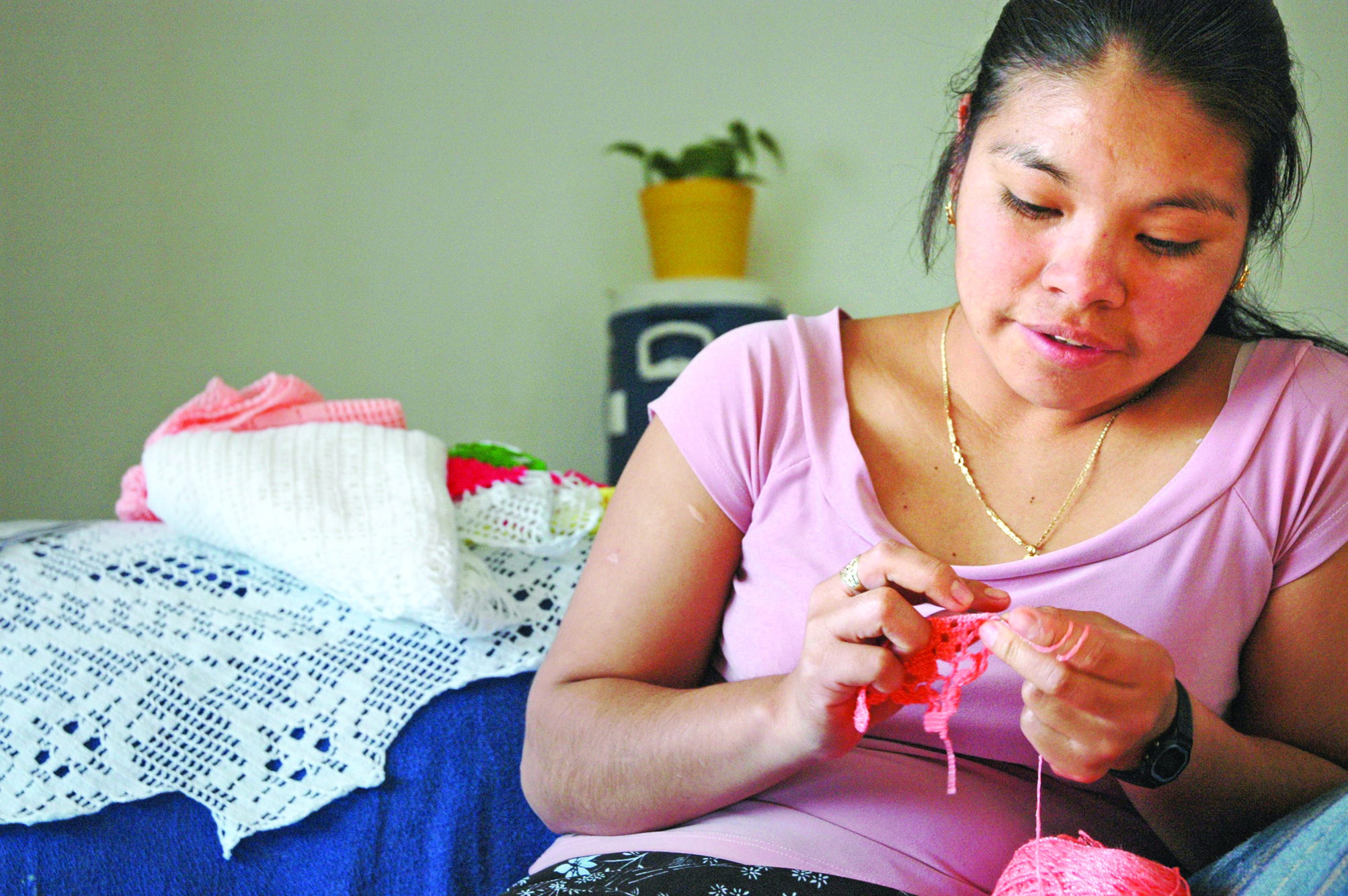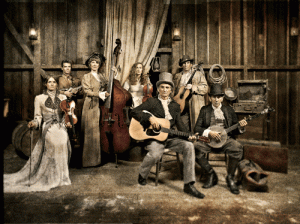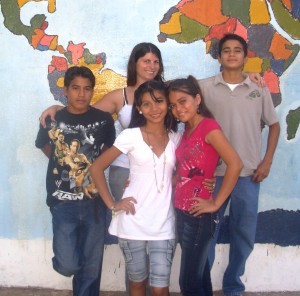Story and photos by Will Shoemaker
The similarities in topography alone are striking. Rugged, mountainous terrain, where eking out a living can be arduous, is nothing new for the Cora Indians of Mexico who have found a new home in the Gunnison Valley.
Natives of the Sierra Madre Mountains of the state of Nayarit in western Mexico, the Cora are people of the mountains through and through – independent, strong, thick-skinned and capable of overcoming most any adversity thrown their way.

The Cora are different in appearance from their lighter-skinned Mexican brethren, the “mestizos,” who are of mixed indigenous and European ancestry – possessing features more akin to natives of North America.
Though sometimes small in stature, the Cora are known as extremely hard-working people. In the Gunnison area today, the men work on ranches or work construction. Women work in restaurants or hotels if they’re not at home raising children.
Like elsewhere in Colorado and the United States, the Mexican immigrant population has experienced rapid growth in recent years. At the front of that wave in the Gunnison Valley have been the Cora.
Between 2000 and 2010, Gunnison County’s Latino population grew by nearly 80 percent. Last year, more than 40 percent of families served by the Multicultural Resource Office in Gunnison were Cora Indians. Southwest Colorado is said to have the largest population concentration of Cora outside of Mexico.
Anthropologist George Otis has documented the migration of Coras to Colorado from a mountain village called Jesus Maria – one of the poorest jurisdictions in Mexico – beginning in the 1980s. At first, most were single, young men – who first worked as shepherds in the mountainous country of the Uncompahgre National Forest. In the ensuing decades more came from Mexico, including women, for whom the traditional agricultural life was not attractive. More recently, as drug cultivation and resulting violence have plagued the region, more Cora have journeyed to places like the Gunnison Valley in seek of refuge.
Montrose was the first destination for many of these immigrants, but they’ve since spread to Gunnison, Delta and Olathe.
I first became acquainted with the Cora community in Gunnison in 2008, when my employer, the Gunnison Country Times, partnered with KBUT Community Radio in Crested Butte for an immigration project.
[InContentAdTwo]
I’ve found them to be quiet people who keep to themselves – perhaps not completely at home in the Spanish-colonized, larger Mexican-immigrant community, nor among English-speaking people in the United States. Many of these mountain-dwelling Mexicans still speak their native language. It’s not uncommon in a group of immigrants for younger Cora to help translate Spanish for elder Cora in the group.
Occasionally, cultural carry-overs can be seen in Gunnison among the Cora who’ve migrated here. Women still produce colorful bands, bags and “carpetas” from bright, colorful fabrics.
On a recent day in a small, plain apartment in Gunnison, Jaquelina Serrano crocheted one of the carpetas from bright yellow yarn, while her mother-in-law Honoria Aquilar – a small, elder Cora woman – sat on the floor of the apartment, working on her own traditional weaving. Jaquelina sells the works, which take on average a whole week to create – ranging in price from $25 to $300.
Traditional skirts are still worn by some Cora women, mostly in their homes. And corn tortillas are still an important part of the Cora diet.
While very few attend church in the Gunnison Valley, Cora religion combines indigenous tradition with post-colonization Catholicism. Some Coras in the Gunnison area – the ones who can travel freely between the U.S. and Mexico – journey to their homeland annually to celebrate the Holy Week around Easter, “La Semana Santa Cora.” It’s one of the most important festivals in the Cora community.
The first Cora to come to the Gunnison Valley predominantly took up ranching for longtime local families. The Celestino family has worked for Gunnison rancher Bill Trampe, who attests to their hard work, for more than a decade.
Seventy-five-year-old Esteban Celestino still is up at the crack of dawn on the coldest of mid-winter Gunnison mornings to tend to Trampe’s cattle.
“They do everything,” Trampe told me during an interview three years ago. “They drive tractors, irrigate in the summertime, fix fence. They do it all. And the reason I’ve got all hombres is that I haven’t had an Anglo ask for a job in I don’t know how many years.”
For the Cora working on local ranches, integration has proven difficult. Still, over the last few decades attempts have been made to spur the integration of Cora into the larger community.
In Gunnison, those efforts began in the mid-1990s, when an advocacy group was formed among non-immigrant community members. Since then, grant funding has allowed successes to be built upon. Most recently, the Even Start Family Literacy Program – part of No Child Left Behind – has allowed for a range of efforts aimed at integration. Even Start is a partnership involving the Gunnison County Library District’s Literacy Action Program and the local school district, which acts as the program’s fiscal agent. Adult English classes meet for three hours, four times per week, which includes mandatory teaching time with both adults and their children. One monthly visit to their homes is also required.
Largely, the focus of the program is supporting education that takes place in the local schools, explains program Coordinator Mary Burt, whereby the program’s leaders are working as “cultural brokers.”
Burt has been involved with issues of immigration in the Gunnison Valley since 1992 when she was a Western State College student. As a result of Even Start and similar literacy efforts previously, “parents are more engaged in their child’s education,” says Burt. And it’s helped to take the burden off the Gunnison County Multicultural Resource Office.
“There’s been segregation within the Mexican culture,” Burt explains. “The mestizos sometimes don’t interact with the Cora. Sometimes there are Cora who don’t interact with other Cora.”
About seven years ago Marketa Zubkova, an immigrant herself from the Czech Republic, became a volunteer with the Multicultural Resource Office in Gunnison. She’s studied the Cora extensively, and currently teaches classes to immigrants in Gunnison through the Even Start program.
“It’s hard,” Zubkova admits of integration. “First they have to integrate into the mestizo community. It’s still a very isolated group of immigrants.” Part of the difficulty is the language barrier, but also, the “receiving community” – as it’s called – tends to assume that because the Cora immigrants are from Mexico, they speak Spanish. Zubkova says that some of her students come to class not just to learn English, but also to learn more Spanish.
It’s hoped that the literacy program will help foster interaction which could lead to integration. There have been successes.
Through Even Start, Cora families have begun to take their children to Tenderfoot, a local daycare and child development center. Burt says it took some convincing that the center was safe and clean. “The families, they’re not accustomed to a child care center,” she explains. “Really, it was laying the groundwork by literally holding their hands. When I started taking these three-year-olds to Tenderfoot, some of them could only speak Cora. Within a month they were speaking English.”
But in the face of federal budget woes, programs like Even Start are on the chopping block. Coordinator Burt explains that funding through the program was recently cut. “We don’t want to lose momentum,” she says. “We’ve really aligned ourselves well, it’s just the money part.” She’s optimistic that more money to fund the program will be found, even if it means paring back the programs that are offered.
There are Cora in the Gunnison Valley who have begun building their lives here and have no intention of ever returning to Mexico to live.
Elisa Celestino, 29, works as a certified nursing assistant at the local nursing home. She’s studying for her GED through the Even Start program and aspires to attend nursing school. “What attracts me is caring for people,” she explains. Elisa has lived in Gunnison 11 years, but was born in Jesus Maria. She lived in Mexico until she was six years old, when she and her mother moved to Montrose.
After a recent Even Start field trip to Western State College that I was invited to attend, Elisa inquired about recreational trail opportunities near the college. She says she loves to run. Her teacher remarked that a few years ago Elisa ran a half-marathon in Gunnison, finishing in second place in a pair of borrowed running shoes.
Other Cora say they hope to make enough money while living in the U.S. that they can one day return to Mexico to live.
Thirty-nine year old Basilio Altamirano was born in Jesus Maria, but attended high school in Tepic, the capital of Nayarit, after which he joined the military in Mexico for four years. Like so many other Cora, Basilio came to Montrose in pursuit of work. “There the land is very dry, and the people have nothing to do for work there,” he explains of his homeland.
He’s lived in Gunnison now for 11 years and learned to work as a mechanic. When he can, Basilio sends money to his aging parents in Mexico. The influx of money into the town of Jesus Maria is noticeable, according to the Cora. Houses are now nicer than they once where. They’re called “casas del norte,” or houses from the north, because of the means by which they’re funded.
But increasingly, families like Basilio’s are torn. His U.S.-born, 12-year-old daughter, he recognizes, will one day finish schooling and want to stay in the U.S.. Basilio says she’s interested in becoming a police officer. So what will happen when the day comes that Basilio wants to return to Mexico? Will his daughter stay in the U.S.? He doesn’t have an answer.
Things are changing, Zubkova acknowledges. “Life is harder down there,” she says. “There is a lot of violence, so most of the families who have kids here, they are afraid of going back there to live.”
The election of President Obama in 2008 gave rise to a national movement encouraging immigration reform – exhibited through demonstrations in the Gunnison Valley and elsewhere. Zubkova, also a board member for Colorado Immigrant Rights Coalition, says that many Cora participated in the loose formation of an advocacy group in Gunnison. “They really wanted to see a change, but after awhile nothing happened,” she explains.
That’s led to discouragement and a loss of momentum, interest and participation among immigrants. Of the few remaining in the group that meets every few months, most are Cora, she says. Zubkova and two Cora immigrants attended a workshop this spring in Montrose. They’re hoping to rekindle interest in immigrant advocacy. In May, a group of about a dozen Gunnison immigrants – mostly Cora – met again and elected a name for itself. “Inmigrantes Unidos de Gunnison.” It’s part of a larger consortium of Western Colorado Justice for Immigrants Committees.
Basilio Altamirano is an outspoken member of the group. Another is a man named Pedro, who’s lived in Gunnison since 1999, and attests to the hardships that many Cora immigrants still face in the U.S. He tells me about how he works construction but says “right now there’s no work. There’s been no work for three weeks.”
Zubkova believes that some of the more outgoing Cora immigrants, like Basilio, Pedro or Elisa, are instrumental in helping to show others the path toward integration. Basilio, however, suggests that integration will continue to be an uphill battle until there is meaningful immigration reform.
He says he would like to see more trust and confidence in Mexican immigrants, and believes that current laws foster an “us and them” mentality in local communities.
“We are here to work and have a better life, but we need to be aware of the fact that if we do something wrong, then we should be responsible,” he says. “I’m not sure what needs to happen, but people are coming.”
Will Shoemaker migrated from the Midwest to the mountains of Colorado in 2002, and has found integration into life aside from outdoor recreational pursuits challenging at times. He lives in Gunnison and works for the Gunnison Country Times.




Great article. When was it written?
It was written over the past two months by Gunnison author Will Shoemaker.